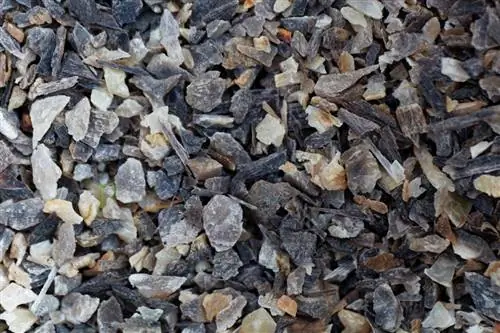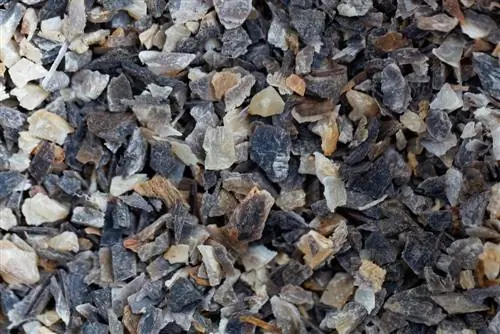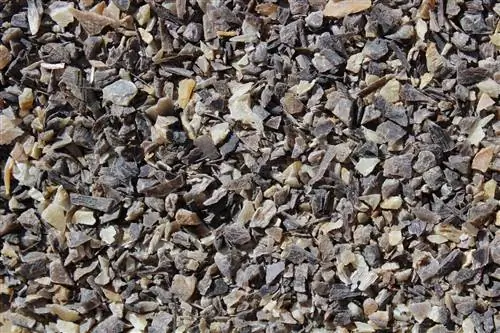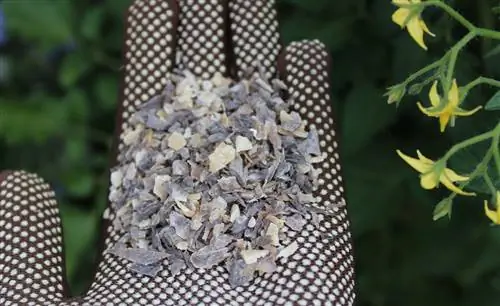- Author admin [email protected].
- Public 2023-12-16 16:46.
- Last modified 2025-06-01 06:02.
Perennials need at least one fertilizer application per year. In this context, organic long-term fertilizers have proven particularly useful. This includes, among other things, horn shavings. Our guide provides you with information about the popular fertilizer and explains how to use it correctly.
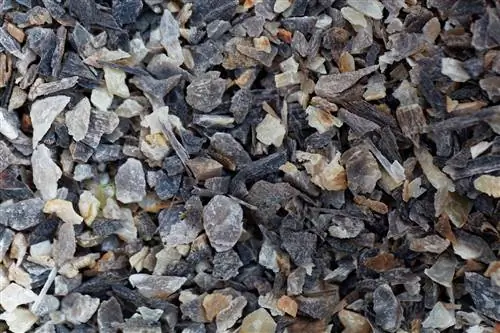
How do you properly fertilize perennials with horn shavings?
To fertilize perennials with horn shavings, first remove weeds, loosen the surface of the soil, work the horn shavings in lightly and water the area thoroughly. Application should be done once a year in spring.
Why perennials need organic slow-release fertilizer
The greatest advantage of perennials is that they sprout again in spring year after year. It goes without saying that this process takes a lot of effort. The plants therefore need support in the form of nutrients every year. You can ensure this by giving fertilizer.
To supply perennials with nutrients, organic fertilizers are preferred that work over a longer period of time and stimulate the soil to release nutrients. The following fertilizers are recommended for annual basic fertilization:
- Compost
- Blood Meal
- Bone meal
- animal manure
- Horn shavings
Horn shavings as a preferred fertilizer
Organic long-term fertilizers such as horn shavings provide your perennials with constant nutrients over a relatively long period of time. They are among the traditionally used fertilizers in agriculture and are characterized above all by their ability to optimize the fertility of the soil.
Horn shavings and other long-term fertilizers are slowly decomposed by microorganisms. This creates organic substances that sustainably improve the soil. The process usually takes a long time, which is why one dose per year is usually sufficient.
The most important property of horn shavings is that they ensure an increased nitrogen content in the soil. Nitrogen is one of the main nutrient elements for perennials and other plants. It is considered the “engine of plant growth”.
Extra: Do not use mineral fertilizers
For annual basic fertilization, avoid using mineral fertilizers.
- make the plants grow too fast
- Perennials become unstable and can break
- Plants’ water requirements increase enormously
Fertilizing perennials with horn shavings - step by step
- Remove any weeds completely - by carefully weeding without tools so as not to damage the shallow roots.
- Loose the soil only superficially - with a cultivator (€309.00 on Amazon) or a digging fork. Under no circumstances should you loosen it deeply (many perennials have shallow roots)!
- Work horn shavings into the soil around the perennials. Rake them in lightly.
- Water the soil thoroughly.
Basic information on fertilizing perennials
Apply the slow-release fertilizer once a year - in spring, ideally at the beginning of March, after you have cut back the perennials and weeded the bed.

